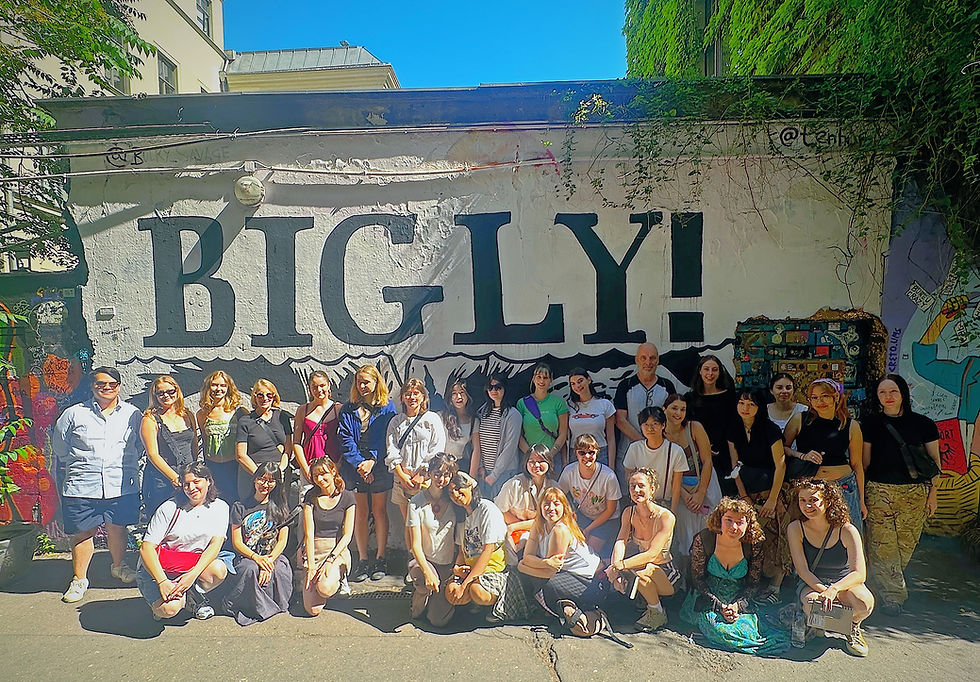New Book: Alex Burchmore, New Export China
- NEWS

- Sep 11, 2023
- 3 min read
Alex Burchmore, New Export China: Translations across Time and Place in Contemporary Chinese Porcelain Art (University of California Press, 2023).

In 2011, globally renowned installation artist Liu Jianhua (b. 1962) excavated one of the fastidiously cultivated lawns outside the Sino-Italia Design Exchange Centre in Shanghai and filled the cavity with an assortment of household items, reproduced in gleaming white porcelain. In a shallow pool opposite, he installed a comparable deposit of replica antique jars and vases, some intact but most in pieces, their jagged edges catching the dappled light that played on the surface of the water.
Despite the luxury of their material, the vessels in each funereal mound, almost without exception, were cracked, warped, shattered, or broken, piled in unruly heaps with little apparent order. Liu staged his archaeological intervention, titled Discard, for an international audience familiar with the cryptic conceptualism favoured by many contemporary artists. Yet the component parts of the installation had been manufactured in an ancient city made famous by the more overtly commercial interests of the China Trade from the seventeenth to nineteenth centuries: Jingdezhen, once regarded as the “Porcelain Capital” of the world.
Liu’s porcelain commodities were manufactured in one of the many private workshops that have appeared in this city over the past few decades, where he was assisted by friends and colleagues who he first met in the 1970s while employed as an assembly-line ceramicist in a state-owned factory of the Maoist era. His reproduction antiques, on the other hand, were produced by some of the many professional replica-makers who comprise a large proportion of Jingdezhen’s working population.

Discard transgressed the boundaries within which contemporary art is usually situated by creators and critics, drawing on the time-honoured history of a traditional craft and the skills of professional artisans to create a highly conceptual work inspired by the preoccupations and paranoias of the present. The installation also exemplifies the artistic phenomenon identified and studied in New Export China: the creation by a dispersed group of Chinese contemporary artists of a unique genre of ceramic art that blurs distinctions between past and present, artistic and artisanal, the legacies of porcelain export and the global mobility that artists today enjoy.
This art is embedded in the experiences and emotions of our current era, and so it is inherently new in both form and conception. At the same time, it is immersed within historic currents of global trade and identified with the parallel that centuries of export have fostered between china, the material, and China, the country. It is an art of current relevance that engages with the cultural, social, and political debates animating our world, yet the perspective it brings is one of profound historic resonance.

Alongside Liu, three other artists have emerged since the 1990s as representatives of this specific category of export art: Chinese-Australian painter, sculptor, and installation and performance artist Ah Xian (b. 1960); Hong Kong-born, now New York–based ceramicist Sin-ying Ho (b. 1963); and the ever-divisive Ai Weiwei (b. 1957). They are distinguished not only by their shared use of porcelain but by their exemplary cultivation of four distinct attitudes toward this medium. Liu has the longest professional and artistic affiliation with porcelain and with Jingdezhen, where he trained as an assembly-line ceramicist in the 1970s and 1980s. Ah Xian, on the other hand, initially experimented with porcelain five years after moving from Beijing to Sydney, inspired at first by a desire to reconnect with his heritage. As a self-taught artist who had formerly worked in oil paints and plaster, his turn to ceramics was motivated by artistic inquiry, and he created only one substantial series before moving on to other materials. Ho’s discovery of ceramics was awakened by a comparable curiosity, yet her relocation to Canada inspired a more sustained academic study of the medium. Finally, Ai Weiwei, like Ah Xian, has received no formal ceramics training and was drawn to porcelain above all by a desire to broaden his artistic horizons, incorporating ceramics within a larger project of political and socio-cultural demystification.
Underlying the motivations and defining criteria for New Export China to which this book is dedicated is an enduring awareness of porcelain’s mobility, exported and enjoyed around the world for centuries. The artists and works discussed occupy an in-between space of making and meaning, at the intersection of multiple cultural and historic contexts. Rather than a clearly defined classification, “New Export China” is therefore intended to suggest an open critical framework for their work, and for contemporary Chinese art in general.
Dr Alex Burchmore is a lecturer in Museum and Heritage Studies at the University of Sydney.
Captions:
Figure 1: Liu Jianhua, Discard (detail), 2011, installation of broken porcelain, Sino-Italia Design Exchange Centre, Shanghai, variable dimensions. Collection of OCT Contemporary Art Terminal, Shenzhen; courtesy of the artist.
Figure 2: Liu Jianhua, Discard, 2011, installation of broken porcelain, Sino-Italia Design Exchange Centre, Shanghai, variable dimensions. Collection of OCT Contemporary Art Terminal, Shenzhen; courtesy of the artist.







Comments